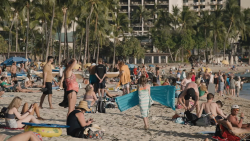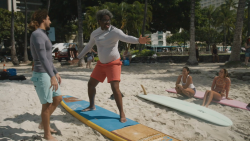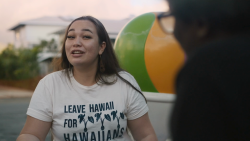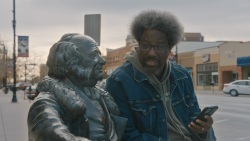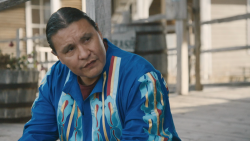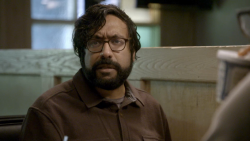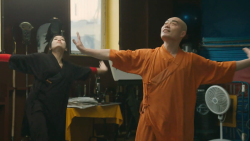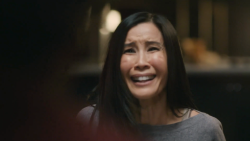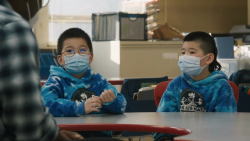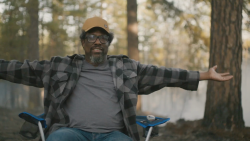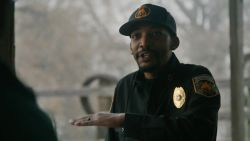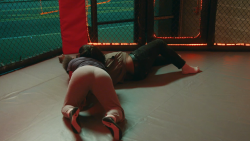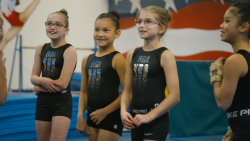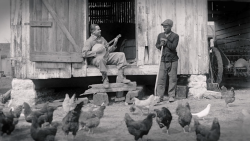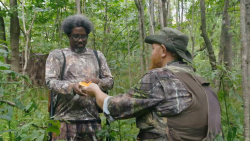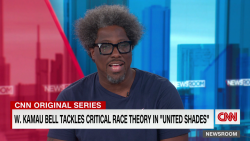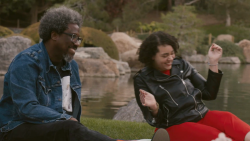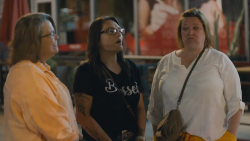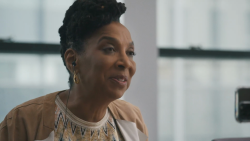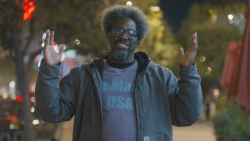Editor’s Note: W. Kamau Bell is a sociopolitical comedian who is the host and executive producer of the Emmy Award-winning CNN Original Series “United Shades of America with W. Kamau Bell.” Kamau has a Netflix stand-up comedy special, “Private School Negro,” and a book with the easy-to-remember title “The Awkward Thoughts of W. Kamau Bell: Tales of a 6’ 4”, African American, Heterosexual, Cisgender, Left-Leaning, Asthmatic, Black and Proud Blerd, Mama’s Boy, Dad, and Stand-Up Comedian.” The views expressed here are his; read more opinion on CNN. To learn more about #livingwhileblack in Milwaukee, Wisconsin, watch “United Shades of America with W. Kamau Bell” on Sunday at 10 p.m. ET/PT.
This week on United Shades of America, you’re invited to the Black People Meeting!
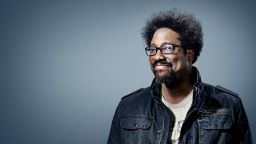
If you don’t know what I’m talking about, let me explain: The Black People Meeting is what happens when black people get together and talk about race, racism, America, President Donald Trump, the TV show “Power,” Stacey Abrams 2020 and/or the latest Beyoncé news – along with lots of other things.
The key about these get-togethers is that when they occur, black people talk the way we talk when there are no white people around (or at least no white people around who ask questions like, “HOW COULD YOU SAY THAT?”). And on this week’s episode I go to a bunch of Black People Meetings (and one “people of color” meeting) in a place that has been designed and governed to have a lot of them: Milwaukee.
Why Milwaukee? Because Milwaukee regularly comes up No. 1 on lists of America’s most segregated cities.
If that surprises you, you are not alone. Most people who don’t know Milwaukee have no idea it is one of America’s blackest major cities. Milwaukee is 40% black, which makes it blacker than Chicago, Compton, and Oakland, California, where I live. And as I learned from the people I met there, the racism felt in Milwaukee extends into the suburbs and throughout the entire state of Wisconsin.
Imagine being a black person, living in Wisconsin (a state that is so racist that you refer to it as “Wississippi”), and when you tell people who live outside of the state they often say, “THERE ARE BLACK PEOPLE IN WISCONSIN?” It’s something like screaming, “HELP MY HOUSE IS ON FIRE!” and the fire department says, “You own a house?”
Milwaukee is often noted as the most segregated city in the country because it has the highest number of neighborhoods that are clearly separated by race. Milwaukee also has all of the issues that come along with segregation, including police violence, high rates of incarceration and disproportionate disciplinary action against students of color. The setting of the TV show “Happy Days” and the home of the American institution of Harley Davidson is also home to a lot of structural and institutional racism.
To learn more about all this, I started by meeting with two experts: historian Reggie Jackson in Sherman Park and professor Syreeta McFadden at the best-named coffee shop ever, “Coffee Makes You Black.”
Reggie shares the story of the 2016 killing of 23-year-old Sylville Smith and the protest that erupted in Sherman Park near the site of the shooting. (We also rolled up to our meeting with Reggie as the cops were rolling up on a group of black people. A white woman had called the cops because the black people were handing out Halloween candy in late October without a permit … and no, you don’t need a permit for that.)
Syreeta breaks down the effects of the discriminatory home loan practices known as redlining, which drew lines and zones on city maps where black people could and couldn’t live. We did a deep dive about racism in our brief time together. And as we were editing the show, I realized that we had never actually defined racism on previous episodes. So this time, we did.
In my experience, most people define racism as simply hating someone because of their skin color. Occasionally, I – incorrectly – use that definition, too. But every anti-racist activist and academic I know believes that treating someone poorly because of their skin color is actually just prejudice. Racism requires prejudice plus power.
Because this country was founded in large part through the genocide of the indigenous people of this land and then largely built on the free labor of enslaved Africans, prejudice is embedded in all of America’s structures and institutions. That’s how prejudice gets its power and becomes racism. That’s why you can’t just hire black police officers and expect the whole institution of policing not to be still packed with racism. And white folks, if that’s making your head swim right now, imagine all of that going through your head every time you apply for a job, talk to a police officer or simply walk outdoors.
While undoing all of this might seem way too big and daunting a task, there are still lots of people in Milwaukee working hard to dismantle structural racism. Dr. Monique Liston, for example, is teaching anti-racist workshops through her learning organization, Ubuntu Research and Evaluation.
Harvard-educated entrepreneur Lisa Caesar and her brother, John Ridley – yup, the Oscar-winning screenwriter of “12 Years a Slave” – are fighting brain drain in Milwaukee through an artist’s collective they have founded called No Studios. It aims to help people’s showbiz dreams come true without people having to leave Milwaukee. I also had some pizza with young activists from L.I.T., which stands for Leaders Igniting Transformation. They are a group who help students of color navigate a school system that too often sees them as statistics and not individuals.
One of my meetings in Milwaukee was an inside job. Since I am what I like to call the ACLU’s Celebrity Ambassador of Racial Justice, the ACLU set me up with their Wisconsin chapter, where I talked with plaintiffs Gregory Chambers, Stephen Jansen and Wisconsin state representative David Crowley. Chambers and Jansen recently won an important case against the Milwaukee Police Department’s stop-and-frisk policy.
I was even lucky enough to speak with Maria Hamilton about her powerful work with Mothers of the Movement and Mothers for Justice United. In 2014 Maria’s son, Dontre Hamilton, was waiting for his brother on a park bench when he was killed by Milwaukee police officer Christopher Manney, after a manager at the nearby Starbucks called the cops.
In the wake of Dontre’s death, Maria joined forces with the mothers of Eric Garner, Trayvon Martin, Jordan Davis, Michael Brown, Hadiya Pendleton, Sandra Bland and Tamir Rice to form Mothers of the Movement as a way to support each other and fight for police reform. Maria also started her own group, Mothers for Justice United, to help all of the moms whose families have been devastated by police violence. The fact that we even need these groups is an indictment of our country.
I ended my series of black people meetings and POC meetings in Milwaukee with a special lesson from professor John Diamond, an expert on implicit bias. Implicit bias is a term that describes the way our brains are affected by growing up within systems that enact oppression. You’ll learn all about it if you watch the show and you’ll get to see me take a test that measures how biased I am. You’ll also see that I give everyone in the audience a homework assignment – to take an implicit bias test, easily available online thanks to Project Implicit, an international research collaboration founded in 1998 by scientists at Harvard, UVA and University of Washington. Everyone should take one. Whether you think you’re biased or not, racism is a part of your life. It’s in the air we breathe. But if we measure our bias, hopefully we can dismantle it.
So this week, welcome to the Black People meeting! But white folks, please don’t bring your potato salad with the raisins in it.


